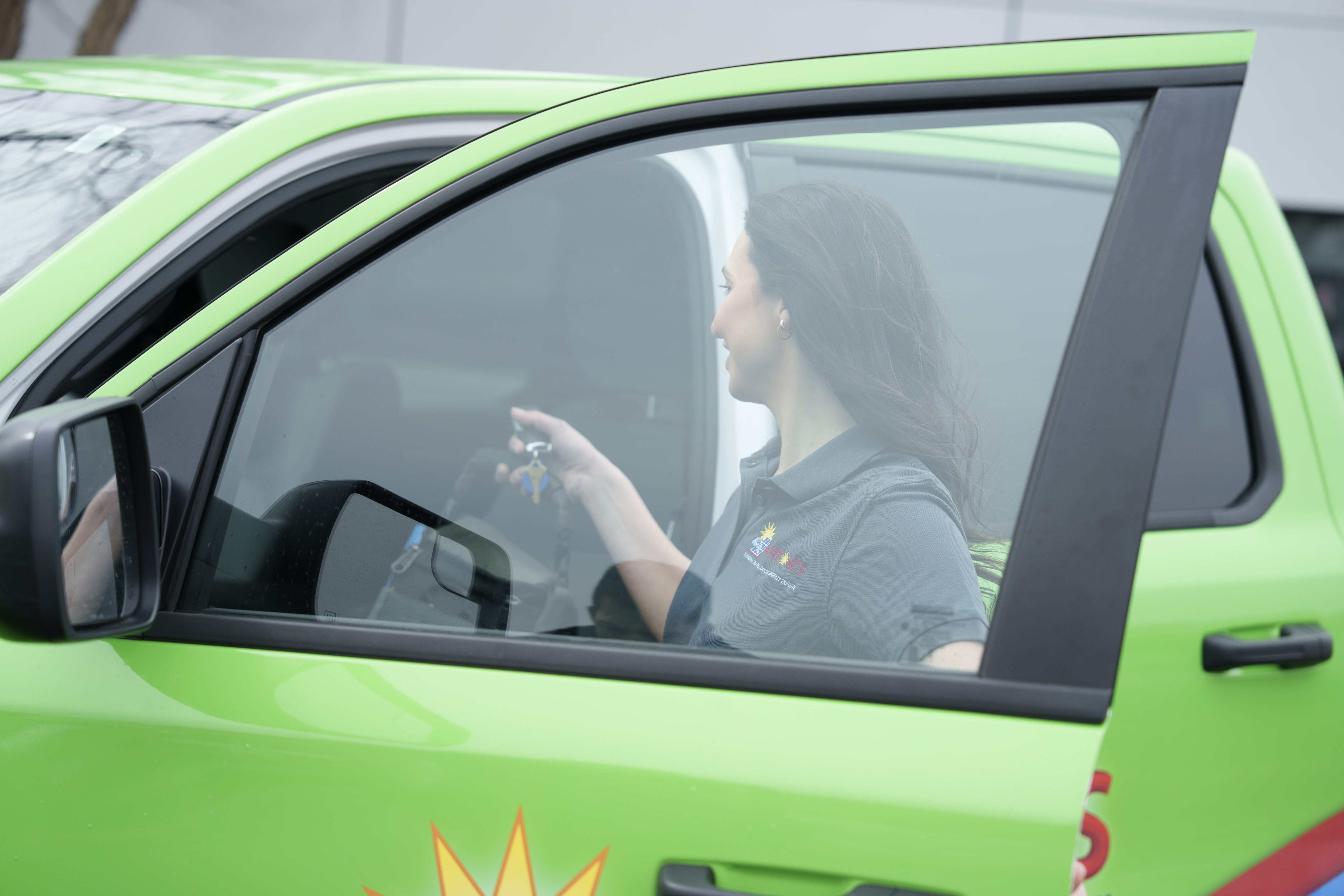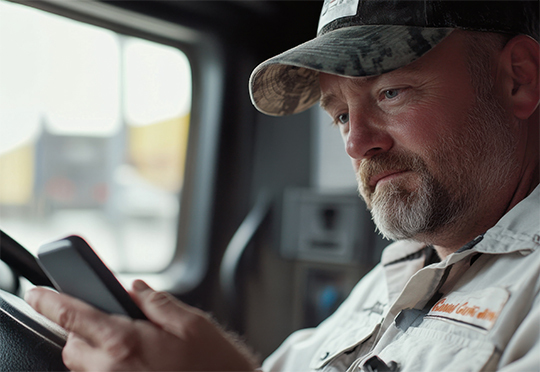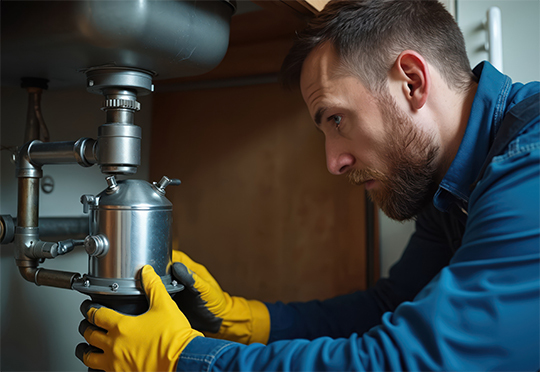
On Time, Every Time: How To Improve Customer Communication Through GPS Tools
Customer expectations in service industries are evolving, with transparency and reliability now central to earning trust and loyalty. As GPS tracking becomes standard in fleet management and field service workflows, companies that play their cards right are discovering new ways to transform how they communicate with their clients — and this trick doesn’t require lady luck or a poker face.
It’s actually simple, which is why we chatted with Joe Marcotte, our very own senior director of product management at Linxup about the relationship between GPS fleet tracking and customer communication.
Joe’s no stranger to fleet management tech. He held key product roles at Verizon Connect, Quadax, and Runzheimer before we snagged his expertise. He’s worked on everything from safety features and mobile apps to integration strategies and enterprise solutions, building a reputation for practical problem-solving, clear communication, and driving results.
In a recent conversation, we explored how real-time location updates and proof-of-service features from commercial GPS streamline operations and fundamentally reshape the customer experience — setting higher standards for accountability and satisfaction in a competitive market.
How GPS helps tackle changing customer expectations
It’s fair to say customers aren’t as patient as they used to be. With the rise of subscription services, digital services, and same-day delivery, we’re used to getting what we need and in a hurry.
And it’s easy for large enterprises with endless resources to deliver — not so much for smaller businesses. GPS tracking tools with automated alerts are one of the few ways smaller businesses can reasonably keep up with those expectations without bloating overhead costs.
These systems are quick to set up and automate the conversation process. Drivers don’t need to worry about telling a customer when they’re on the way or experiencing a delay; it happens automatically, keeping your customers in the know and drivers off their phones when they have better things to worry about than whether their message went through.
| “It's an easy way to communicate with your customers. People get regular and consistent communication from companies in their personal lives — from order to delivery. They expect that from services businesses too. Businesses need to understand that expectations change to compete.” - Joe Marcotte |

How does tracking company vehicles with a GPS improve customer satisfaction?
Think about how often you obsessively refresh your email after ordering something on your wish list until it's finally delivered. That’s the magic of GPS tracking that keeps customers in the loop. But that’s not the only reason why it’s so important for fleet managers to take full advantage of this technology and understand how GPS trackers work.
Real-time service updates
Customers lead busy lives. Knowing when a driver is on the way gives them a heads up, whether it’s to clean up kids' toys strewn on the lawn before a landscaping service mows or to panic pre-clean before the actual cleaning service shows up.
Real-time service updates also keep customers informed if a delivery or service will be delayed. This prevents them from waiting around and getting more frustrated by the minute as the clock passes your driver’s expected arrival time. Over time, this transparency builds trust and loyalty in your customer base.
| “If a first time customer doesn’t have a good experience, they likely won’t call you again. That’s why clear communication about what services to expect and make a good first impression. Without it, your drivers waste time, you could end up losing money, and everyone gets frustrated. That’s why we focus on showing service businesses how simple communication tools and tracking on-site time can really help the customer experience over time.” - Joe Marcotte |
Improved safety
It can be nerve-wracking for customers to open their homes to strangers. Real-time ETAs and short driver bios help keep customers safe, so they can see Tim is 10 minutes away to come fix the shower — and they can verify that it’s actually Tim who they let in the house.
This also keeps your drivers safe. Customers have ample time to bring dogs inside and do whatever they need to prepare for a safe delivery or service.

Service accountability
GPS tracking also provides a reliable paper trail, which is vital to prove to customers that work was done and give fleet managers the visibility they need if there are discrepancies between what a driver reports and what a customer reports.
Fleet managers can see metrics like arrival times or time spent at particular locations and receive automated visit summaries. This provides peace of mind if there’s any doubt about service from a particular employee or customer.
| “The post-job wrap-up is really helpful for businesses who are in residential cleaning, lawn care, and businesses like that. There [are] services like pest control, spraying fertilizer, or snow removal, where it's not always as obvious when the job is done. If a customer’s not home, they don’t see you spray or clear their driveway. Then a bill shows up, and they’re left wondering if the job was even done. Visit summaries fix that. They show exactly when you were there, what you did, and how long it took — so the invoice matches the work, and the customer feels confident.” - Joe Marcotte |
Asset tracking
GPS asset tracking is a must-have for service-based businesses, making it easy to provide top-notch service to your customers. They allow you to manage and track smaller equipment, so you always know your drivers have the right machinery or tools for the day without time-consuming inventory.
The real bonus is how easy this makes it to respond if there’s a vehicle breakdown. You can easily and quickly dispatch a new driver and know from the start they’ll still have everything they need to keep the customer happy.
| “Fleet efficiency starts with keeping vehicles on the road. That’s not just about the driver — it’s about the back office staying ahead of maintenance. Our solution pulls fuel levels and diagnostic codes straight from the engine so you can plan service, prevent downtime, and keep trucks moving. And if something does break down, GPS tracking shows you where your underused vehicles are so you can bring in a backup and stay efficient.” - Joe Marcotte |
Optimized scheduling
Busy drivers don’t usually have the time to think about how their routes could be better — they’re more focused on getting to a destination safely than whether a back road route can save them a few minutes.
GPS insights can build more efficient schedules and routes, such as spotting traffic patterns and identifying road closures. This allows drivers to provide more reliable service and reach more customers without sacrificing service quality.
Key metrics to track with GPS
It’s one thing to install GPS-enabled trackers in your fleet; it’s another to know what to do with them. Here are some key metrics you can track via GPS to keep your drivers on the road:
- On-site time: The amount of time spent per stop can indicate if certain drivers need more support or if certain customers require more time.
- Number of visits: The number of customers a driver serves in a day can optimize workload and driver routes.
- Idle time: The time a vehicle is on but not en route somewhere can help spot and reduce fuel inefficiencies.
- Customer or work-related stops: When a driver makes stops during work hours that aren’t tied to their job, it may signal the fleet manager should check in with the driver and find out what’s going on.
- Maintenance: How often a vehicle requires maintenance or when it was last serviced, allows fleet managers to prevent vehicle breakdowns and other issues.
| “Measuring GPS on-site time is a real game changer. It helps you catch things like incorrect bids, poor driver compliance, or jobs running long because someone needs more training. With better data, you can clean up your schedule, run more efficiently, and either take on more customers or spend extra time with the ones you already have. In the end, that efficiency pays off with happier customers and better service.” – Joe Marcotte |

4 ways businesses can improve their customer service with GPS-based tools
If you’re not taking advantage of everything your GPS trackers have to offer, you’re missing out on endless opportunities to simplify workflows, work more efficiently, and experience the full benefits of GPS vehicle tracking systems.
1. Automatically send visit summaries
Automatic visit summaries are an easy win if you want to boost customer experience without adding another responsibility to your drivers’ plates. These summaries can be sent to your customers as drivers depart, showing how long the service took and key billing information to keep everyone in the loop.
2. Spot route inefficiencies
GPS tracking across your vehicles can help you spot route inefficiencies earlier to keep your drivers moving. Maybe there’s a certain street that always gets backed up when school lets out, or an intersection with many near-miss accidents. GPS trackers can help find those trouble spots and find alternate routes.

3. Track coaching opportunities
Unsafe drivers can draw the wrong kind of attention from the community, whether or not your customers take notice. You may not immediately tie GPS tools to driver coaching plans, but these tools are part of systems that can detect hard braking, lane drifting, and other indicators that a driver may need some extra support to do their job safely.
4. Customize customer experiences
Customizing customer experiences can be costly and time-consuming. However, geofencing GPS tools from Linxup can make this practice simpler and more effective, rewarding customer loyalty and earning more repeat customers. Geofencing allows you to create custom messages for repeat customers or those with special requests, getting the most out of your customer address book and providing a hands-on experience without a hands-on resource drain.
| “Say you want to do something special for a customer you’ve had for a year. You’ve got the whole GPS history to show the value you’ve delivered, and that extra effort can go a long way in keeping them loyal. Some of our customers even create groups for their highest-value accounts and send them more personalized messages. You have the option to set up summaries to automatically send, or send them manually as needed which gives you the flexibility to add some personalization.” – Joe Marcotte |
Build customer loyalty with solutions from Linxup
Happy customers are one of the most valuable resources for a business, providing reliable revenue, generating new leads, and creating word-of-mouth buzz. Smaller businesses have sometimes struggled to keep up with enterprise providers, but that doesn’t need to be the case with GPS fleet tracking and customer communication.
Take advantage of asset tracking tools, vehicle management, and more in one solution. Book a demo to see how Linxup can provide vehicle tracking for small businesses and beyond to stay ahead of rising customer expectations.



